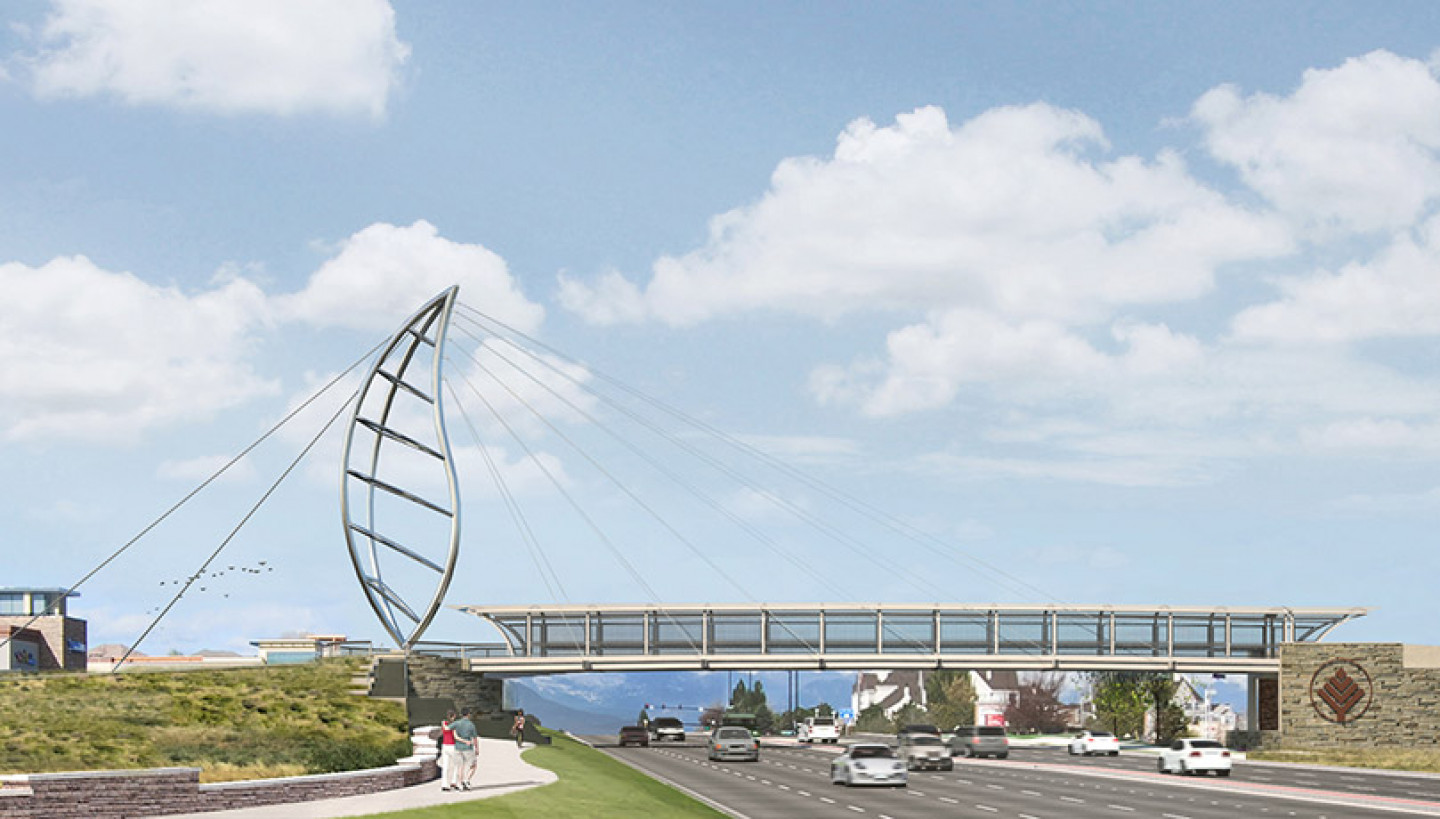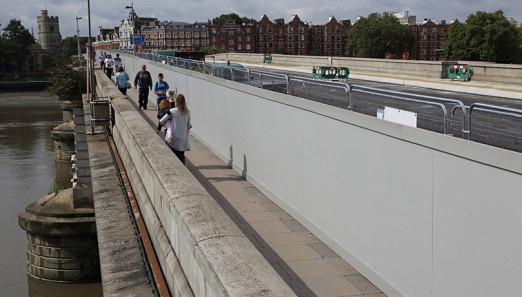Fentress Architects is pleased to announce the approval of the Lone Tree Pedestrian Bridge that will span Lincoln Avenue immediately east of Lincoln Commons. The bridge was approved by the Lone Tree City Council in their April 19th session. The cable-stayed bridge, with its unique leaf-shaped mast, will be a recognizable feature of the Lone Tree landscape.
Lincoln Avenue is a busy thoroughfare, serving as many as 89,000 cars a day. The bridge will enable walkers, joggers and bicyclists to safely cross over Lincoln Avenue. This will also reduce interruption to the traffic light sequence on the street and help ensure a more constant traffic flow. Among the expected users of the bridge will be local residents from Heritage Hills, RidgeGate, and Lincoln Commons, as well as students at the nearby Lone Tree Elementary School. Bicyclists traveling along the Willow Creek Trail will be able to cross Lincoln on the bridge as well.
Spanning 170 feet, the Lone Tree Pedestrian Bridge is a cable-stayed structure. A large mast in the shape of a leaf rises 78 feet on the south side of the bridge. From the leaf, six pairs of cables extend to the north to support the bridge. The architectural and structural design of the bridge will minimize nighttime closures of Lincoln Avenue during the bridge construction. Open mesh on the sides of the bridge will protect bridge users and the cars below, and an ETFE (polymer based) membrane roof will provide protection from the elements. The roof is translucent, allowing sunlight to illuminate the bridge during the day; the bridge lighting will cause the roof to gently glow at night. Ramps on each end allow easy access for those with disabilities, people pushing strollers, and bicyclists.
A cable-stayed bridge is a highly efficient way to construct medium- to long-span bridges. The reduced weight of the structure results in reduced cost of materials. Bridges such as this have been successful in spurring economic development in the Riverfront Park and LoHi areas of Denver. The delicate structure of the Lone Tree Pedestrian Bridge will create a striking form while minimizing the impact on views to the mountains and downtown skyline.
Curtis Fentress, Principal in Charge of Design, said, “We are proud to design this bridge for the City of Lone Tree, and are excited about how it will serve the community as a landmark.” Fentress Architects, a Denver-based architecture firm, has helped shape the Denver and the DTC skyline with projects such as Denver International Airport’s landside terminal, the Colorado Convention Center, Sports Authority Field at Mile High, Charles Schwab Campus, 161 Inverness Drive West, Palazzo Verde and One DTC.

